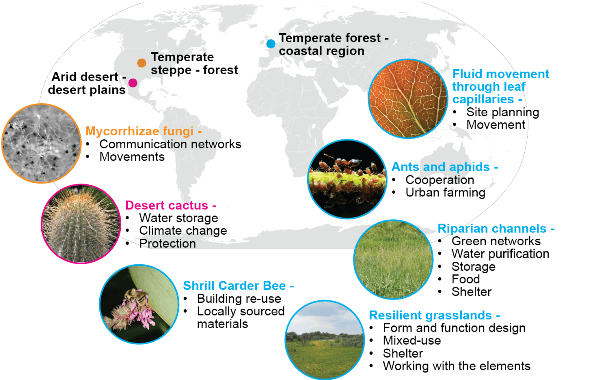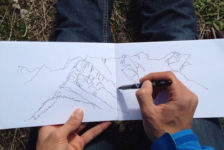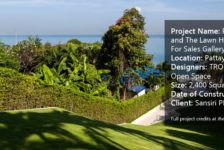Richard James MacCowan is a co-founder of Biomimicry UK. He recently completed his master’s degree in urban design at Leeds Metropolitan University, where he is now a Ph.D. researcher and part-time lecturer. His research focuses on using biomimicry as a tool in ecological design. Hi, Richard. Thanks very much for talking to us here at LAN. Let’s dive right in. Perhaps you could begin by telling us what biomimicry is? To borrow from notable academics, I would say biomimicry is the conscious emulation of nature’s genius. It’s looking at how we can mimic the form, processes of systems of nature to provide us with more resilient solutions. I say solutions instead of design, as using nature as inspiration is being used across many fields, ranging from landscape architecture through to economics.
And what is the purpose of Biomimicry UK? The purpose of our network is to provide a way to bring together students, researchers, academics, and professionals who are either interested in this evolving field or are currently practising biomimicry. We are not exclusive, so we are covering not only the well-known fields linked to biomimicry, but also business and economics. Our longer-term goal is to link more research institutions together to develop stronger links with industries looking for more innovative strategies that they cannot develop due to time and cost constraints. Who else is working on Biomimcry UK with you? The other co-founders are David Sanchez, a Ph.D. researcher at the University of Dundee, and Annette Schumer of Biomimicry NL. We have three “champions” of biomimicry: Julian Vincent, honorary professor of biomimetic engineering at University of Bath; Giles Hutchins (co-founder, Business Inspired By Nature) ; and Michael Pawlyn, founder of Exploration Architecture. What are the benefits of biomimetic design? People see a lot of things as cost value. But social well being has cost value, too. If we are innovative and follow what nature does successfully, this will have knock-on effects by reducing costs and environmental impact and benefiting our own social well being. If, for example, we develop more SUDS in cities, we have the social benefit of being closer to nature and the sound of running water. And is this something you’ve incorporated into your own work? My project (The Gas Works, Canvey: Using the principles of Biomimicry to develop an Urban Design Framework on Canvey Island) looked at a site on Canvey Island, which is currently used for all the major gas that is brought into the country. I looked at the island’s ecosystems and organisms, particularly Canvey Wick – one of the country’s most biodiverse habitats for insects. By looking at Canvey Wick, I was able to see how resilient ecosystems work, from the smallest ant to the largest tree. This enabled me to develop a continuous-loop system to minimize the impact a large-scale development would have on the island’s infrastructure. I was lucky enough to win the Student Prize at the 2013 National Urban Design Awards and the Fraser Teal Award from Gillespies. This systems approach is something I am developing for my Ph.D. So what other projects are on the horizon for Biomimicry UK? At present, we are developing our on-line presence and applying to be linked to Biomimicry 3.8 in the USA. David Sanchez and I are part of a steering group to develop a “Biomimicry Self-Build Project” with Resonate Arts House in Alloa, Scotland. In addition, I recently ran a workshop at the Global Biomimicry Conference on systems thinking. We used real challenges given to us by companies from both in the UK and USA. This will allow us to develop links to industry to promote biomimetic thinking. Currently, I am arranging workshops with both the York and Leeds Green Drinks events to be held on the 18th and 23rd July, respectively. Thanks, Richard. Lastly, do you have any favorite fascinating projects that use biomimicry to tantalize our readers? The one that I keep going back to is the Silk Pavilion by the MIT Media Lab. (This project explores the relationship between digital design and biological fabrication in terms of product and architectural scales). Just watch the video! It’s incredible. Also, Airbus are developing some interesting projects, from materials to minimize cleaning in bathrooms based on the lotus leaf, to sharks’ skin to achieve drag reduction in airplanes. Finally, for the landscape architects, Living Machines, based in the USA, have developed systems to clean water based on the tidal flow of a wetland. Once again, thanks so much for talking to us, Richard. If any of our readers are interested in what you’ve read today, more information on Biomimicry UK can be found on their Facebook Page and on Twiter (@Biomimicry_UK). Recommended reading: Biomimicry: Inventions Inspired by Nature by Dora Lee The Shark’s Paintbrush: Biomimicry and How Nature is Inspiring Innovation by Jay Harman Interview conducted by Sonia Jackett Return to Homepage Featured image: Credit: Kevin Krejci, source ; Water Droplets on Leaf Published in BlogLogin
Lost Password
Register
If this is your first time on the new site, please click "Forgot your password?". Follow the steps to reset your password. It may be the same as your old one.











